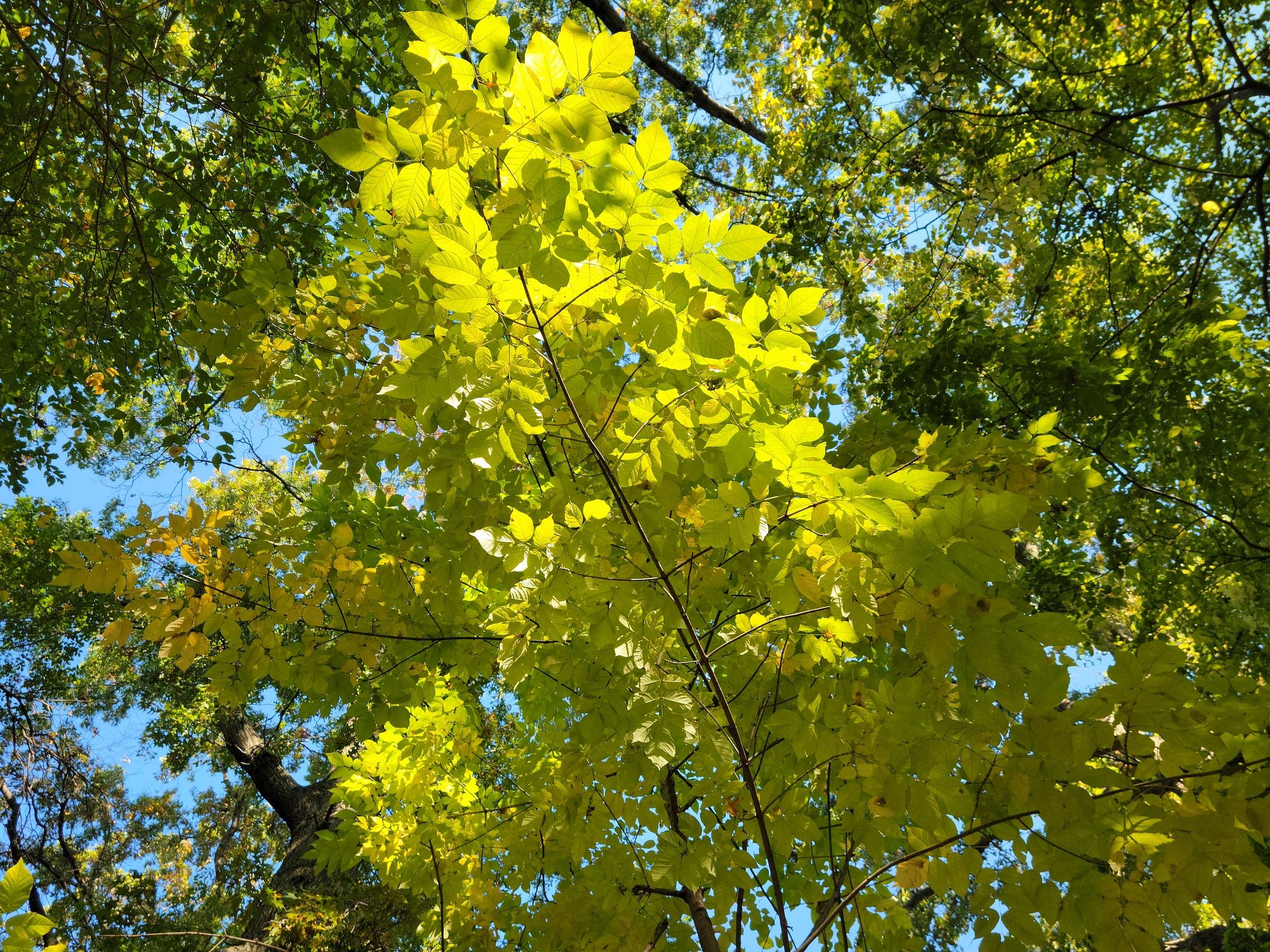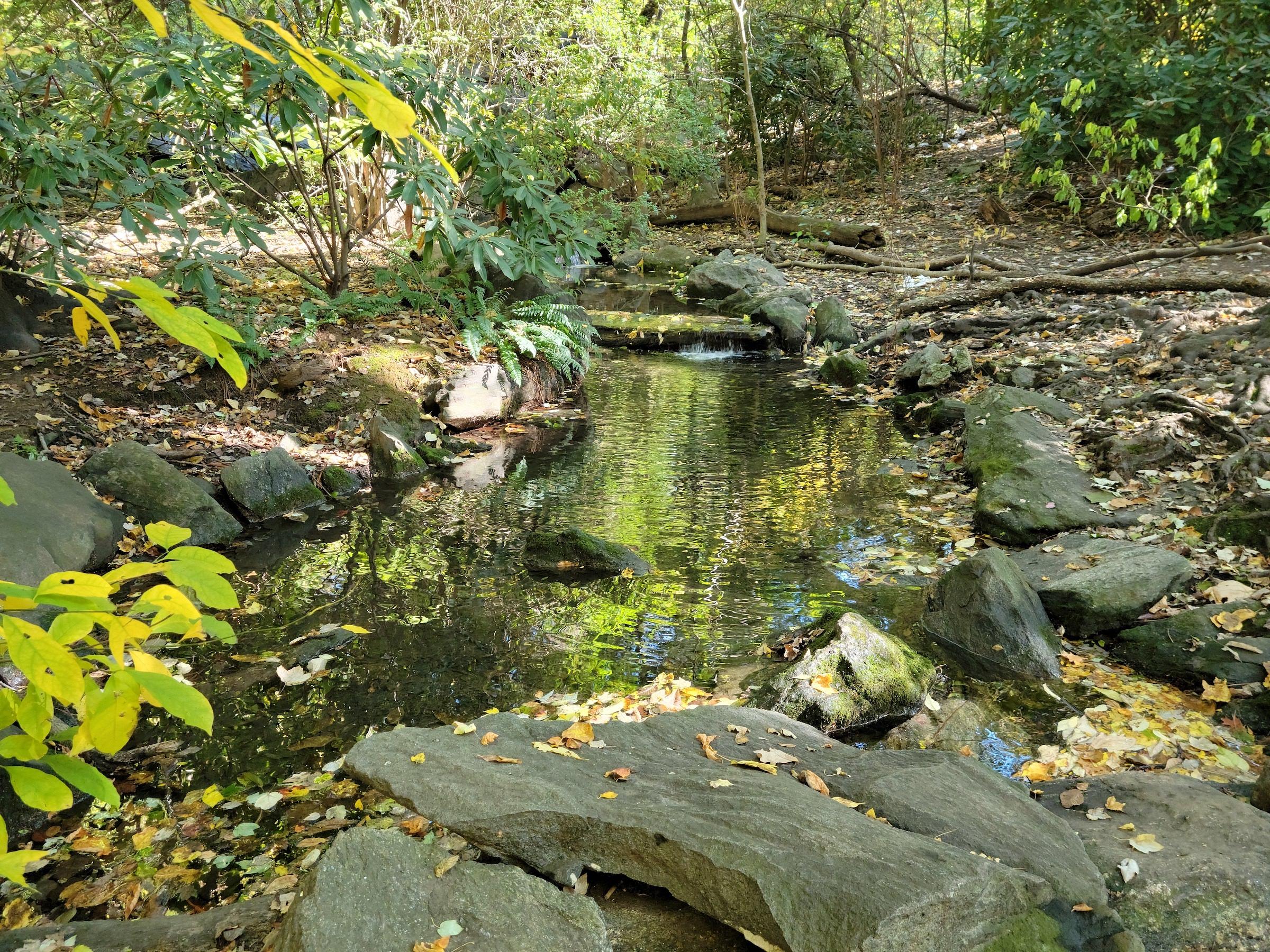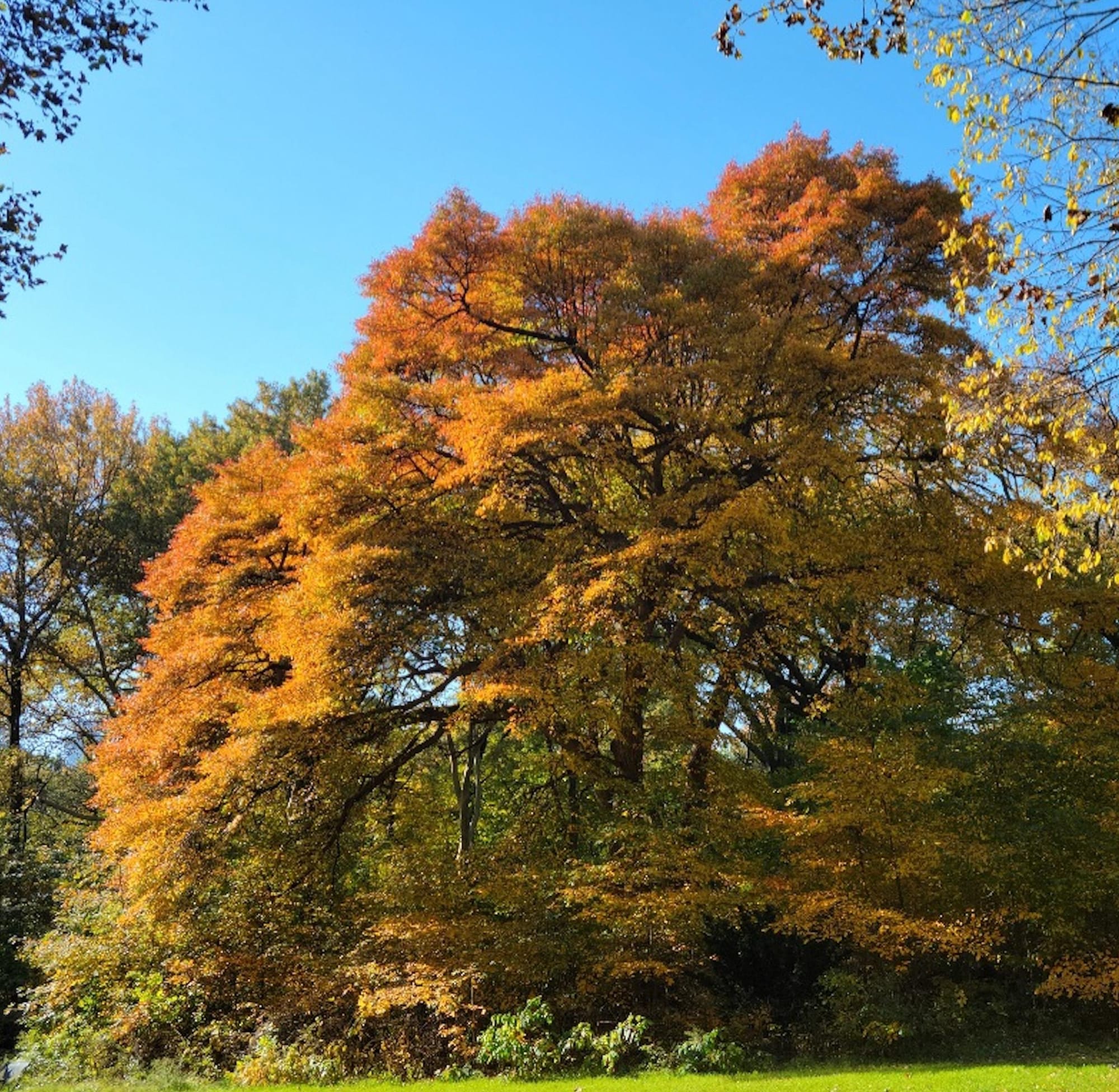The Ramble
Central Park
59th St. to 110th St., and Fifth Avenue to Central Park West
New York City
Open from 6 a.m. to 1 a.m., 365 days a year
As a performance artist, Ito Opilwa (with its Americanized stage name Tupelo) soars 81 feet high. Having a regal, 56-foot canopy of fiery orange and yellow finery, it resembles a grand portrait of royalty or a Native American tribal chief.
Looking up at the historic, majestic work of art, anticipating its next role, I silently whispered, “I will return to see you next season, my friend.”
The black tupelo tree commands center stage at one of New York’s most dynamic galleries — the 36-acre Ramble woodland within Central Park. It changes costumes on cue, shedding its feathery headdress of bright, cascading leaves, to drape its multiple, black arms in an icy, winter white shawl, and to then don a rich emerald uniform in the spring.
Spanning 843 acres, Central Park is arguably the largest, most popular “experiential visual art” and even performance art in New York City. Similar to trendy installation art of gargantuan images projected against the indoor walls of cavernous buildings within which visitors walk, this immersive art project, an incomparable staging of nature’s beauty, is also manmade.
Through an art lens, I toured the Ramble, which is intentionally designed and maintained to appear wild and natural. This “gallery visit” expanded how I perceive and think of more classically defined “art.”
The word tupelo comes from the Native American Creek words ito opilwa, meaning swamp tree, because these trees often grow near water. The one in Tupelo Meadow has deep Manhattan roots, as part of Frederick Law Olmsted and Calvert Vaux’s original design, dating back to the 1858 opening of the urban park.
The tupelo (also called sour gum) tree is a living, breathing shape and form of art. With light hitting its leaves rustling in the wind, I envisioned it as a watercolor, a pencil sketch, an abstract rendition, and a traditional oil painting. I understood how artists’ re-creations seek to bring indoors this awe-inspiring beauty of existence that nature and wildlife uniquely instill in us. But as Central Park Conservancy guide Carla Shotwell explained, actually it was the other way around. The Hudson River School of art, with painters such as Thomas Cole and Asher Brown Durand, inspired Central Park, including the Ramble. She said the wooded area was modeled to resemble the picturesque, lush landscape paintings, depicting what visitors would see in the Catskills, Adirondacks, and White Mountains. Is this life imitating art or is art imitating life? Or are life and art always one and the same?

The layout of foliage, tree trunks and branches resembles a floor-to-ceiling, dense hang of artwork in galleries. This salon-style display of art is often credited as originating in 1667 in Paris, with the exhibition of the French Royal Academy of Painting and Sculpture. The Central Park Conservancy website notes that in preparing for the park’s opening, “workers moved nearly 5 million cubic yards of stone, earth and topsoil.” It emphasizes the landscapes were all built by hand, planting “500,000 trees, shrubs and vines.” In the Ramble, native trees thrive alongside varieties from across the country, Europe and Asia. Today, approximately 18,000 inventoried trees grow in the park.
Instead of overstimulation with the risk of museum headache, the clutter of trees as art has a therapeutic effect. The winding paths, amidst the dense green and yellow foliage, provide a physical and psychological respite from New York City’s gridiron of streets. On the trails, it’s easy to lose your bearings, with fresh, chilly scenery prompting Hansel and Gretel, fairy-tale imagery. (Fortunately, no gingerbread homes emerge from the black bedrock.) An immersion in nature, the Japanese practice of shinrin-yoku or “forest bathing,” spontaneously flourishes around and within hikers. Kaiser Permanente notes this activity is “found to lower blood pressure, heart rate, and levels of harmful hormones — like cortisol, which your body produces when it’s stressed.”
With light shining through, yellowing chartreuse leaves against a clear, blue sky resemble Louis Comfort Tiffany stained glass panels. The intricately cut polygonal leaves transform into patterns for windows in an outdoor house of worship.

The trees create an ecosystem of birds. More than 200 species live in or visit the park while crossing to safety, along the migratory path of the Atlantic Flyway. Shotwell explained that the powerful city parks commissioner Robert Moses felt people needed specific structures such as playgrounds, pools, or tennis courts, as reasons to visit a park. In 1955, he wanted to demolish and replace the Ramble with a senior citizens’ center and shuffleboard courts. However, the active birding community, which the Ramble attracted, rose up and blocked his plans.
In plain view, the Ramble camouflages its highly manicured rough-hewn artistry, even down to its soft and spongy soil. “This is a new kind of way for us to manage paths. It’s called bonded carpet,” said the guide, pointing to the ground. “It has a mulch on the top but over the top is this netting that holds these recycled fibers underneath. It lasts a lot longer than mulch paths and it’s much more accessible.” The engineering allows people in wheelchairs or pushing strollers to more easily navigate the planned wilderness. And it absorbs rainwater to reduce flooding the city’s sewers during storms.

The original marshes and swamp waters were drained, and now park maintenance controls the flow and levels of all the bodies of water throughout the park. Turning on and off faucets creates the Gill, a rippling, narrow stream in the Ramble. The clear, running water, channeling Claude Monet’s dappled reflections of light and color, rolls by in a relaxing, audible burble. It adds to the expansive experiential literature, comprehended through a moving language of sights, sounds, wind, and sun.
New York City’s Parks and Recreation Department owns Central Park, which is managed by the nonprofit, the Central Park Conservancy.
What I plan to review next: Adam Wassilchalk and I scheduled a visit to view “Barkley L. Hendricks: Portraits at the Frick” at the Frick Collection. We’re looking forward to sharing our different (or similar) responses!






